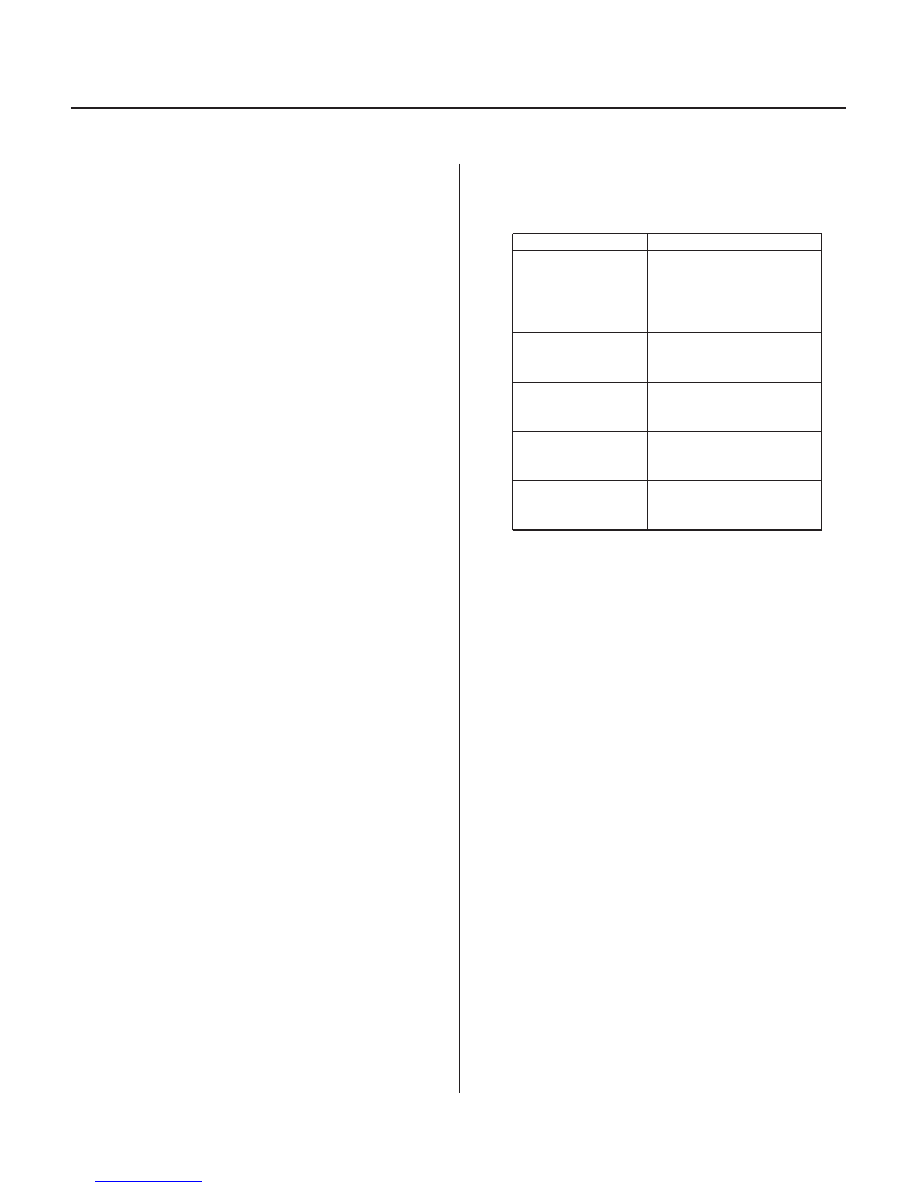Honda Odyssey 2004. Manual - part 240

−
S0X4AA1E10474059548FEAT01
Stall Speed rpm:
Specification:
2,250 rpm
Service Limit:
2,100
2,400 rpm
Problem
Probable causes
14-354
Automatic Transmission
Stall Speed Test
1. Engage the parking brake, and block all four wheels.
2. Connect a tachometer to the engine, and start the
engine.
3. Make sure the A/C switch is OFF.
4. After the engine has warmed up to normal
operating temperature (the radiator fan comes on),
shift to the 2 position.
5. Fully press the brake pedal and accelerator pedal
for 6 to 8 seconds, and note the engine speed. Do
not move the shift lever while raising the engine
speed.
6. Allow 2 minutes for cooling, then repeat the test in
the D, 1, and R positions.
NOTE:
• Do not test stall speed for more than 10 seconds
at a time.
• Stall speed tests should be used for diagnostic
purposes only.
• Stall speed should be the same in D, 2, 1, and R
positions.
• Do not test stall speed with the A/T pressure
gauges installed.
7. If the measurements are out of the service limit,
problems and probable causes are listed in the
table:
•
•
•
•
•
•
•
•
•
Stall speed rpm
high in the D, 2, 1,
and R positions
Low fluid level
ATF pump output low
Clogged ATF strainer
Regulator valve stuck
Slipping clutch
Stall speed rpm
high in the 1
position
Slippage of 1st clutch
1st gear one-way
clutch defective
Stall speed rpm
high in the 2
position
Slippage of 2nd clutch
Stall speed rpm
high in the R
position
Slippage of 5th clutch
Stall speed low in
the D, 2, 1, and R
positions
Engine output low
Torque converter one-
way clutch slipping
03/07/29 09:40:12 61S0X050_140_0357